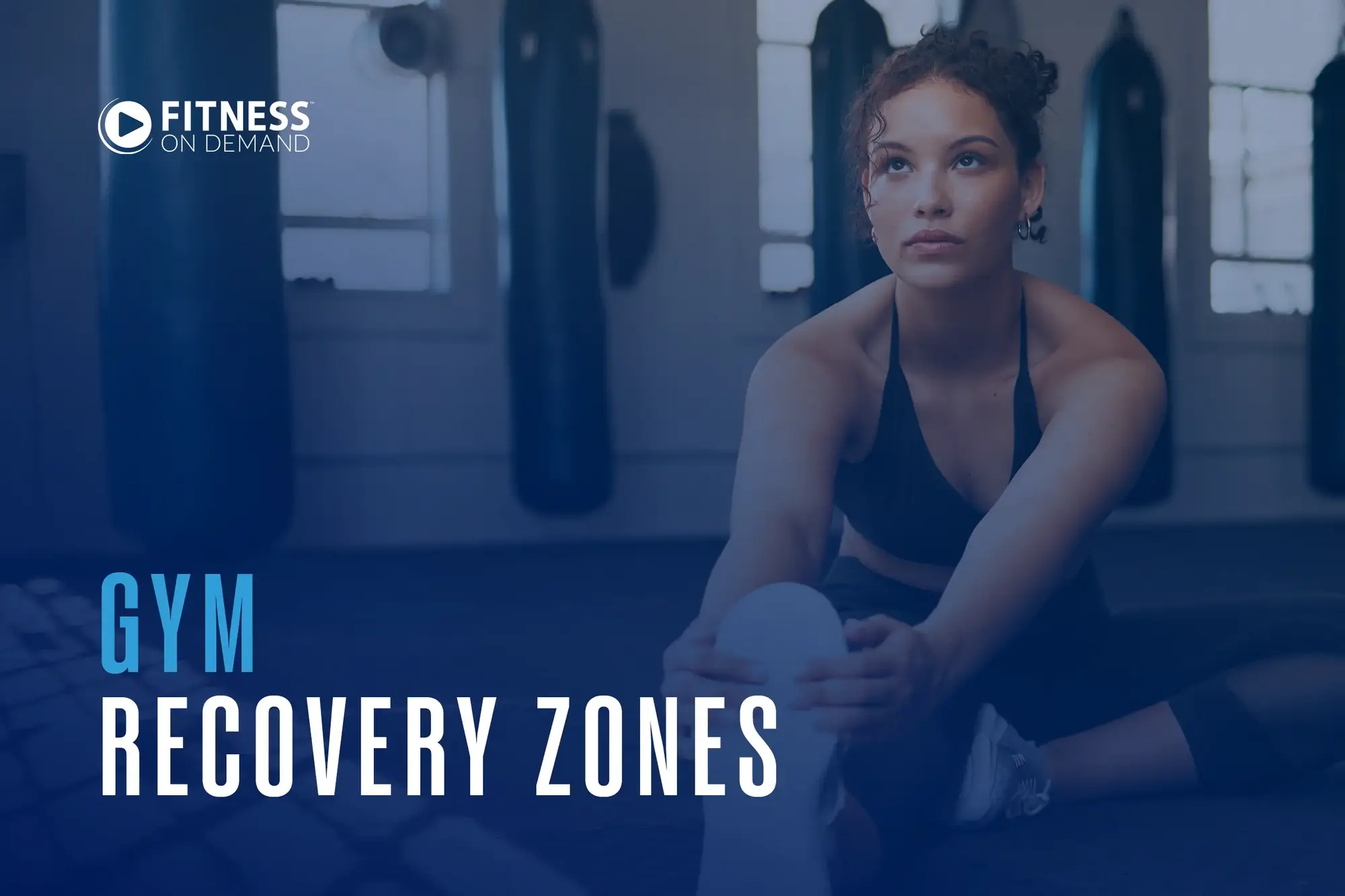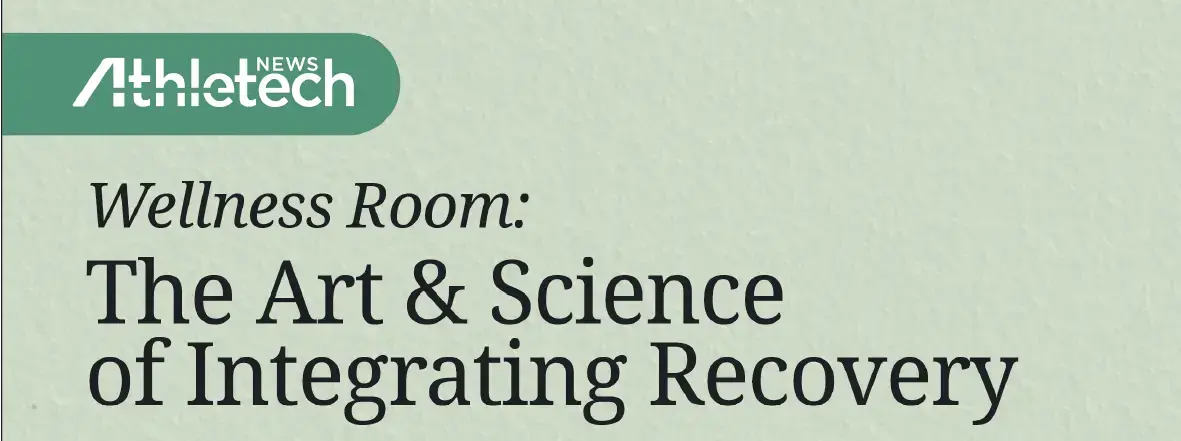During a workout, gym members track everything from steps to heart rate and blood flow. But when it comes to post-gym recovery, many leave it to chance. They finish a tough workout, skip stretching, and head home sore or stiff.

Even with the best equipment on your floor, the member experience is incomplete without gym recovery. Without recovery guidance, your members may face slower progress, nagging aches, and even preventable injuries. Instead of being energized for their next visit, they may leave drained and less likely to return.

Step Inside the Wellness Room
That’s why gym recovery is a key driver of retention and long-term satisfaction.
To begin with, recovery involves stretching in the gym with gentle holds that improve circulation, release tension, and restore flexibility. But it’s only part of the picture. Let’s understand how your gym can offer members a holistic recovery solution.
The Growing Importance of Recovery in Fitness
Recovery is no longer an add-on or a take-home task. It’s a core part of the gym experience that members now expect you to provide.
Gym recovery helps prevent muscle soreness, speeds up healing, and lowers the risk of injury. This will keep your members feeling their best and consistent in their training. And when you make recovery part of the experience, they’ll associate those results directly with your gym.
The demand for recovery is already here. Wearable tools and apps now track vitals, heart rate variability, and muscle readiness, making members more aware of what their bodies need between workouts. Strength training programs now include mobility and stretching, while housing communities have started promoting recovery zones as wellness amenities. These shifts signal a clear trend — recovery isn’t a perk anymore, it’s an expectation.
When your members leave a workout feeling good, they’re far more likely to stick around. By offering guided recovery programming, you turn a post-workout afterthought into a value-add that builds trust and loyalty. This keeps your members coming back to your gym by boosting engagement, improving retention, and positioning your gym as a fitness hub.
Why Stretching Classes Matter
After an intense exercise session, your members need to cool down before they get back to daily life. A gym recovery session can help them do that. This matters because it helps members heal faster and leave feeling refreshed, not wiped out after exercise.
Stretching classes go beyond this. Physically, they help improve suppleness, support movement, and reduce the risk of injury by keeping muscle fibers strong and balanced. They also ease post-gym muscle soreness and promote healthy blood flow. So, instead of feeling beat up, your members leave ready for their next session.
But the benefits aren’t only physical. Guided stretching also offers mental relief, giving members a chance to slow down, release stress, and reset with mindfulness. Combining physical recovery with mental relaxation, stretching classes can become a standout wellness feature at your gym — one that keeps your members returning.
How Stretching Supports Member Retention
Recovery-focused amenities like stretching classes show your members that you care about their fitness journey, not just their workout. This turns your gym into a place that supports their long-term health.
Stretching makes gym recovery a part of your members’ lifestyle instead of an add-on. When members see recovery integrated into their routine, through guided classes, recovery zones, or digital programs, they feel supported and perform better.
One of the best ways to make recovery a core gym experience is to offer structured, accessible options for your members:
- Create recovery zones: Make sure your floor has a dedicated recovery space with foam rollers and exercise balls. You can also include online stretching classes to make recovery simple and available for all your members.
- Focus on gentle, static stretches: Design sessions that include static stretches like a child’s pose, downward dog, overhead triceps stretch, and hip and back stretches. These improve blood flow, promote detox, and boost muscle relaxation and flexibility, aiding recovery.
- Teach proper technique: Guide your members to hold stretches for 30 seconds to two minutes, maintain a good posture, and breathe deeply. Teach them to avoid overstretching for a safe and effective recovery.
- Target common tight areas: Incorporate stretches that target common post-workout tight spots like the back, hips, and shoulders to improve movement and help muscles recover more effectively.
- Create a holistic experience: Combine stretching with tools like massage guns, infrared saunas, or mindfulness practices to offer a full recovery experience that keeps members engaged and satisfied.
By embedding recovery into your programming and culture, you’re helping members feel their best, stay motivated, and remain loyal. This way, you can turn the recovery process into a true driver of engagement and retention.
Integrating Online Recovery Content into Your Facility
You don’t need extra staff or a large new space to make recovery a part of your gym experience. Online recovery content makes it easy to scale, giving your members access to diverse sessions that meet different needs and fitness levels. For example, a 15-minute guided mobility session on a tablet lets your members loosen their hips and shoulders right after a workout, without attending a class.
Whether on a recovery touchscreen, a mobile app, or facility TVs, digital sessions let your members recover anytime. They can drop in whenever they need it, making recovery a continuous part of their routine.
This convenience not only helps your members feel better physically but keeps them engaged and motivated. When recovery is easy to integrate into daily workouts, members see results faster, stay consistent, and trust your gym with their health.
By combining online sessions with existing recovery zones or equipment, you can give your members more options. And all of these increase satisfaction and retention. So, digital recovery content offers a strategic way to elevate your facility and build a loyal member base.
Future of Recovery in Gyms and Communities
The future of fitness is hybrid, and recovery is no exception. Your members need more than just stretching mats or foam rollers. They’re looking for guided recovery they can access anytime, whether they’re at your gym, in their apartment community, or at work. By combining on-site recovery zones with digital content, your facility gains a clear edge and meets this growing demand.
The use of digital wellness tools is now expanding into shared spaces. If you have an apartment community, you can add recovery programming to common areas. At your gym, you can use touchscreens, apps like Flex App, and connected platforms to deliver on-demand recovery options. These tools make recovery consistent and accessible, no matter how your members choose to engage.
Following this trend can position your gym ahead of expectations and future-proof your wellness offerings for your patrons and prospective clients.
Online Stretching Classes as a Scalable Solution
Everyone can benefit from online recovery sessions and by removing the need for on-site instructors, you can offer reliable, high-quality guidance that works for all skill levels. This means you can expand your reach and give everyone, from beginners who need help with form to seasoned athletes looking to deepen mobility, the same quality experience.
Using on-demand fitness platforms adds more flexibility, allowing your members to join classes whenever it fits their schedule. A member can pull up a 10-minute cool-down on their phone after lifting or dive into a 30-minute guided session on a rest day. Your members can even stream recovery flows in their own spaces at home in a lounge or outdoors in a park.
When recovery becomes this accessible, it’s no longer something members skip. It becomes part of their lifestyle. That shift drives better results, builds consistency, and connects those benefits back to your facility. For you, it’s a scalable way to keep members engaged, improve retention, and stand out as a leader in comprehensive wellness.
Frequently Asked Questions About Online Stretching Classes
What are the benefits of online stretching classes?
Online stretching classes improve flexibility, enhance mobility, and reduce muscle soreness. They also strengthen the immune system and help prevent injuries by keeping muscles healthy. Mentally, they promote relaxation, reduce stress, and encourage mindfulness, making recovery a holistic experience that benefits overall wellness.
Are online stretching classes suitable for beginners?
Guided digital classes make stretching approachable for everyone, no matter their fitness level. Virtual instructors take members through proper form, pacing, and breathing, removing the guesswork and ensuring a safe, effective recovery session without an on-site instructor.
What are the four rules of stretching?
Successful stretching follows four key principles:
- Use gentle, static holds; don’t bounce.
- Stretch within comfort and never push into pain.
- Maintain good posture to protect joints and muscles.
- Breathe deeply and steadily to relax muscles, improve blood flow, and enhance recovery.
Fitness On Demand Powers Online Recovery
Recovery doesn’t have to be complicated or limited by space, staff, or schedules. Fitness On Demand’s recovery station delivers guided stretching classes straight to your gym. From yoga flows to mobility sessions, each class engages members, eases soreness, and supports fitness.
By integrating these digital solutions, facilities can offer a scalable, accessible, and flexible experience that keeps recovery at your members’ fingertips. When recovery becomes a regular habit, it strengthens results, boosts engagement, and reinforces your commitment to total wellness.
Upgrade your members’ recovery experience with Fitness On Demand’s recovery touchscreen solution today.

Author
Luke Miska
Luke Miska is a results-driven business management visionary with a stellar record developing operationalizing strategies, experiences and measurable results that engage teams and customers to lead healthier lives. He leverages his passion for customer-centric strategies and aligns goals between customer needs and organizational priorities, catalyzing business success.
